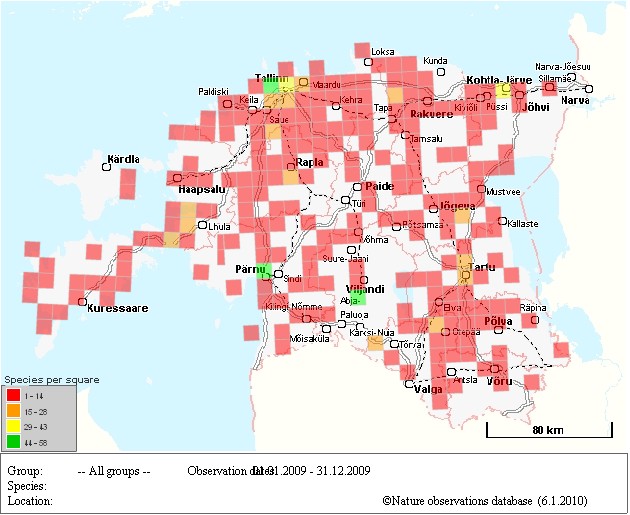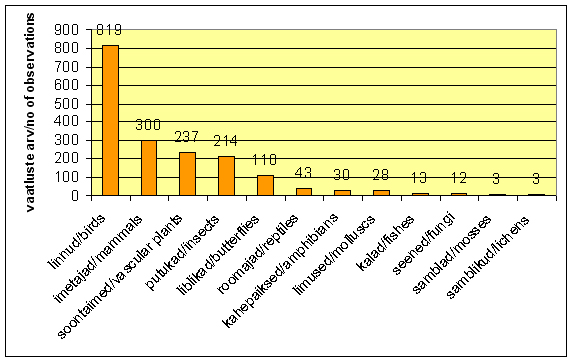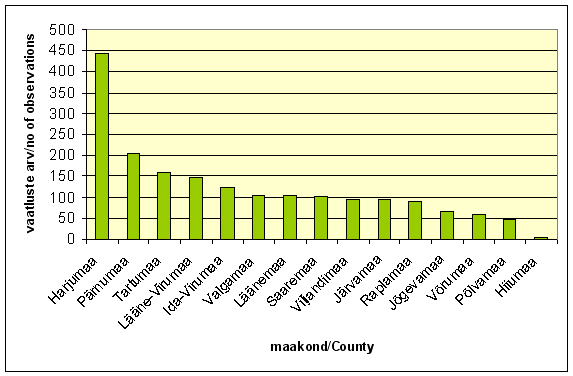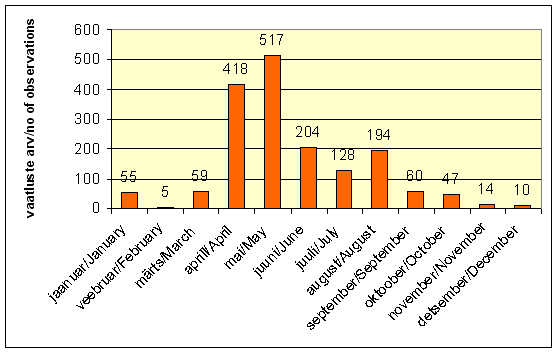Report of database usage in 2009
USING OF NATURE OBSERVATIONS DATABASE IN 2009
In 2009, users submitted 1,850 observations to the Nature
Observations Database. This map shows distribution of inserted observations
in 2009.

By groups of species inserted observations divided as
follow (here are only TOP 10 of species groups):
1) birds - 819 observations,
2) mammals - 300 observations,
3) vascular plants - 237 observations,
4) insects (not include butterflies) - 214 observations,
5) butterflies - 110 observations,
6) reptiles - 43 observations,
7) amphibians - 30 observations,
8) molluscs - 25 observations,
9) fishes - 13 observations,
10) fungi - 12 observations.

The most popular species which observations were entered were:
Roe deer (Capreolus capreolus) 74 times, followed Red fox (Vulpes
vulpes) 52 times, White stork (Ciconia ciconia) 45 times, Common
crane (Grus grus) and Red squirrel (Sciurus vulgaris) 33 times and
Great spotted woodpecker (Dendrocopus major) 25 times.
Observations of species, which are under nature
conservation in Estonia numbered 476. 454 of them have been confirmed: 23 of
these were observations of species under protection category I , 57 under
protection category II and 374 under protection category III .
180 persons entered their observations to the Nature
Observations Database in 2009. 110 of them inserted three or more
observations and 64 of them inserted more than 10 observations. It was 2.5 times
more than in 2008.
By county: users entered more than 100 observations to
the Nature Observations Database from eight counties: Harju (444), Pärnu (207),
Tartu (159), Lääne-Viru (149), Ida-Viru (123), Valga (105), Lääne (103), Saare
(102).

Observations submitted to the database were more frequent
in spring. The biggest number of inputs was in May (517) and April (418)
(see the next graph).
